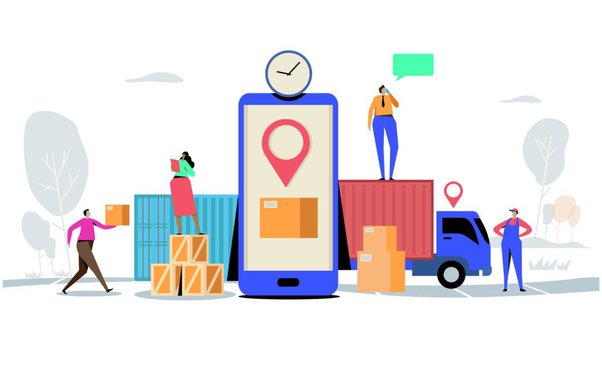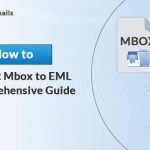As transport management evolves into an increasingly complex, tech-driven field, integrating Global Positioning System (GPS) and the Internet of Things (IoT) into the system has become imperative. This amalgamation promises to unlock unprecedented potential in the transport management software landscape.
Understanding the Role of GPS in Transport Management
Transport management has drastically evolved with the introduction of GPS technology, fundamentally altering the industry’s landscape. GPS, traditionally used for pinpointing geographical coordinates, has grown beyond these roots to provide integral support for the strategic planning, execution, and analysis of transport operations.
Through the integration of GPS into transport management software, fleet managers can now track their vehicles with remarkable accuracy. This allows for immediate response to unforeseen situations, such as detours, vehicle breakdowns, or traffic jams, resulting in improved customer satisfaction and potentially significant cost savings.
However, the utility of GPS goes far beyond simple vehicle tracking. It provides essential data for accurate planning, like distance between two points, estimated travel time, and even road conditions. This information is critical for determining optimal routes and schedules, and for predicting potential issues before they happen. By analyzing historical GPS data, companies can identify trends, patterns, and inefficiencies in their transport operations.
Simply, GPS data is key in keeping transport operations straight. It helps follow transport rules, like speed limits and driver rest times. This protects the company from legal problems and keeps workers safe and healthy.
Further, GPS makes things clear between the transport company and their clients. They can share real-time tracking data with customers, giving them current updates on their deliveries. This openness builds trust and makes a stronger business bond.
Basically, adding GPS into transport software creates big changes in the industry. It’s the main part of smooth operations, supports smart decisions, and boosts a spirit of honesty and responsibility. As technology gets better, what GPS can do in transportation is expected to grow too, changing the rules of good transport management.
Route Optimization: An Important Part in Transport Software
In the tricky world of transport management, the way to win is often the journey itself. Here, route optimization shines as a crucial part of transport software. As you’d think, route optimization is about finding the best ways for a fleet to go. It’s not just about the shortest way from place A to place B, but a complex process considering many parts.
Route optimization software uses advanced algorithms and GPS data to create the most efficient route. It looks at things like current and future traffic, road issues, and delivery times. The goal is to deliver on time, save fuel, and reduce wear on vehicles.
Now, let’s explore how GPS helps. It gives real-time traffic news and allows immediate route changes if needed. For example, if there’s a sudden traffic jam or road closure. This flexibility leads to better efficiency and happier clients.
Using historical GPS data, the software anticipates future situations. This guessing power leads to proactive choices. For example, if a certain route is often busy at certain times, the software may suggest different routes or leaving at different times, avoiding delays.’
Additionally, route optimization keeps improving. As the software learns more data, its predictions get more accurate. So the more it’s used, the better it gets at picking the best routes.
The Revolutionary Integration of IoT in Transport Management
With the integration of the Internet of Things (IoT) in transport management, the industry is witnessing a transformative shift. IoT devices, such as connected sensors, seamlessly mesh with transport management software, opening a floodgate of real-time data about vehicle health, driver performance, and cargo conditions. This vital data forms a critical link in the complex transportation ecosystem, providing the necessary foundation for actionable insights and informed decision-making.
When we talk about IoT in transportation, we’re referring to devices and sensors installed on vehicles or cargoes that communicate through the internet. These sensors continuously collect and transmit information, painting a comprehensive picture of the state of operations. This amalgamation of IoT and transport management software doesn’t just streamline operations but reinvents them entirely.
For example, consider the utility of sensors in monitoring vehicle health. Temperature sensors, vibration detectors, tire pressure monitors, and engine performance trackers can all be used to provide real-time updates about a vehicle’s condition. This allows for proactive maintenance, reducing downtime and averting potential disasters.
In the same vein, IoT devices can monitor the conditions of cargoes, especially those that are sensitive to environmental changes. Be it the temperature, humidity, or any physical movement, everything can be tracked in real-time. This safeguards the cargo’s integrity, reassuring customers and increasing their trust in the service.
IoT devices can evaluate driver performance by watching speed, brake use, and driving patterns. These gadgets offer valuable knowledge about how people drive. It encourages following traffic laws and safety rules. Moreover, it assists in driver training and evaluation.
Summarily, adding IoT to transport management changes how operations work. It gives an unmatched amount of control, visibility, and predictability. As a result, efficiency, safety, and customer satisfaction increase. As the tech improves, we’ll see more progress. More advanced IoT devices and apps will become part of transport management.
The Synergy of GPS, Route Optimization, and IoT
Efficiency and control in transport management reach new heights when GPS, optimized routes, and IoT merge seamlessly. These parameters offer unique traits and form a system that’s stronger and smarter than its components.
GPS is pivotal for navigation, enabling real-time tracking of every vehicle’s exact location. But it goes beyond merely knowing your vehicles’ whereabouts. GPS information helps estimate travel durations, examine road situations, and comply with transport rules. These factors are vital for smooth operations.
Route optimization comes next. This unseen champion makes sure your fleet always takes the best path. It looks at things like traffic, road blocks, and delivery times. It uses fancy math rules and GPS data to cut down on routes, save fuel, and lower downtime. The journey becomes as vital as the place you’re going to.
The IoT comes after. This quiet watcher gives useful live data about the state of vehicles and cargo. It tracks how the engine works to the changes in cargo temperature. IoT tools give a complete link to the transport world. This leads to smart choices and guarantees safety for your fleet and cargo.
In this balanced partnership, GPS makes the path, route optimization fixes the journey, and IoT tools check the general well-being of the system. Together, they make transport management new, making it safer and better. The outcome is a system that’s ready for changes and can predict them. It’s really tough and ready.
At last, GPS, route optimization, and IoT tools give transport bosses a 360 view of their work. This powerful mix gives a fresh level of sight and control, thrusting transport management software into tomorrow. As tech keeps moving, so does the chance for even more refined and complete solutions. This is how synergy works in the transport management realm.
Looking Ahead: The Next Big Things in Transport Management Software
Glancing into the future, we see transport management software evolving with tech improvements. Artificial intelligence (AI) and machine learning (ML) are the major players here. They aim to improve the predictive and prescriptive abilities of these systems.
AI and ML, skilled at imitating human thought and learning from experiences respectively, will boost the power of transport management software. Their strength lies in handling loads of data, spotting patterns, and forecasting effectively. This adds a more intelligent layer to operations.
Imagine this – AI-based algorithms offer traffic jam predictions and alternate routes even before your journey starts! Or, ML models learn from past data to improve route decision strategies. These features will change the way we plan routes, increase operational efficiency, and skyrocketing customer satisfaction.
In addition, IoT is becoming more prevalent. This includes smarter sensors catching a wider array of vehicle and cargo statuses, and connected devices for easy communication between stakeholders. With IoT guiding the way, real-time tracking and decisions based on data are set to become more refined.
Think about the future of transport management software. Imagine the impact of blockchain technology. It makes everything open and safe. Every deal, every route change, and each update on the cargo can be traced and recorded. It would solve disputes easily and make everyone trust each other more.
Don’t overlook the promise of self-driving cars and drone technology. As these get better, they could become part of transport management software. It would change how we handle deliveries and logistics.
Therefore, transport management software’s future is full of potential. As tech keeps improving, these systems will also evolve. They’d be smarter, more efficient, and react quickly. The future is for those who are ready to use these tech wonders. A thrilling future of transport management awaits, so buckle up!
Implement our enterprise-grade Transport Management Solutions and revolutionize your supply chain. Contact us for a custom quote.
Conclusion
GPS, route planning, and IoT have already made transport management software better. It has never been easier to control things and make customers happy. But things are about to get even better. AI, machine learning, IoT devices, blockchain, and unmanned vehicles will push transport management to new heights. As these technologies mature, they’ll work together seamlessly in transport systems. It will create smarter, proactive operations that react quickly. The opportunities are huge. Businesses quick to use these changes will stand at the forefront. A new exciting era in transport management is coming. The journey is just beginning. Buckle up, as we explore the future together!
Frequently Asked Questions
1. How does GPS integration improve transport management?
GPS integration enables accurate vehicle tracking, strategic planning, and predictive decision-making in transport management. It enhances route efficiency, regulatory compliance, and customer transparency.
2. What is route optimization and why is it important?
Route optimization is a process that uses GPS data and advanced algorithms to determine the most efficient routes for transportation, taking into account various factors such as traffic, road conditions, and delivery windows. It improves timely deliveries, reduces fuel consumption, and minimizes vehicle wear and tear.
3. How does the Internet of Things (IoT) revolutionize transport management?
IoT devices collect and transmit real-time data about vehicle health, driver performance, and cargo conditions. This vital information aids proactive maintenance, driver assessment, and cargo integrity, thus enhancing operational efficiency and customer satisfaction.
4. What synergies are created when GPS, route optimization, and IoT are combined in transport management software?
When integrated, GPS, route optimization, and IoT collectively provide real-time vehicle tracking, strategic route planning, and comprehensive vehicle and cargo monitoring. This powerful combination offers an unprecedented level of control, visibility, and predictability in transport operations.
5. How will artificial intelligence (AI) and machine learning (ML) influence future transport management?
AI and ML might boost foresight and effectiveness in managing transport. They’re good at scanning heaps of data, spotting trends, and making smart forecasts. This helps make operations smoother and boosts customer service.
6. How might blockchain tech fit into managing transport?
Blockchain tech might increase both transparency and security by logging all transport activities. This includes any transaction, route tweak, or cargo condition update, making each trackable and unchangeable.
7. What impact might self-driving cars and drones have on managing transport?
As these get better, bringing them into transport management software might totally change delivery and logistics management. This could result in self-ruled, ultra-efficient, and versatile transport solutions.
8. Why is it beneficial to use advanced transport management software?
Using high-level transport management software gives a broad view of operations, makes things more efficient, ups customer happiness, and sets businesses up to make use of future tech advancements like AI, ML, IoT, blockchain, and self-driving cars.


